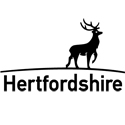
Professor William M. Hicks (1850–1934) 1909
Arthur Stockdale Cope (1857–1940)
University of Sheffield
After attending Carey’s Art School in Bloomsbury, London, he entered the Royal Academy Schools in London in 1874. He subsequently worked primarily as a portrait painter. Between 1876 and 1935 he was a frequent exhibitor at the Royal Academy in London. He also exhibited at the Grosvenor Gallery, New Gallery, Royal Society of Portrait Painters, Royal Institute of Oil Painters, and Royal Institute of Painters in Water Colours in London; Royal Birmingham Society of Artists; Royal Glasgow Institute of the Fine Arts; Walker Art Gallery in Liverpool; and at Manchester City Art Gallery. Cope was elected an Associate of the Royal Academy (ARA) in 1899; a Royal Academician (RA) in 1910; and a member of the Royal Society of Portrait Painters (RP) in 1900.
In June 1888, in partnership with H. H. Roberts, Cope opened an art school in Pelham Street, South Kensington.
Notable among those who sat for portraits by Cope were King Edward VII, George V (on several occasions), King Edward VIII and other members of the British Royal Family, Kaiser Wilhelm II, the Archbishop of Canterbury, and numerous civic dignitaries. Possibly his best known painting is "Naval Officers of World War I", a group portrait of completed in 1921 and now in the National Portrait Gallery in London.
Cope's address was given as 19 Hyde Park Gate South, London in 1876 and 1882; 12 Douro Place, London in 1883 and 1895; Little Campden House, Gloucester Walk, Kensington, London in 1896 and 1926; 31 Palace Road, Kensington, London in 1917 and 1932; 21 Cadogan Square, London in 1933; and Kensington House, Kensington Court, London in 1934 and 1935. He died at his country house, his country house, Treniffle, at Lawhitton, near Launceston in Cornwall on 5 July 1940.
Text source: Arts + Architecture Profiles from Art History Research net (AHRnet) https://www.arthistoryresearch.net/



















